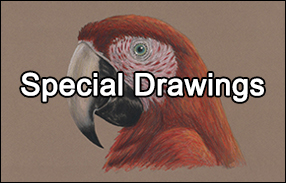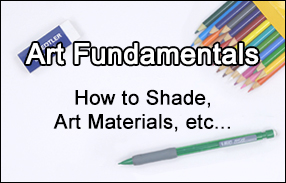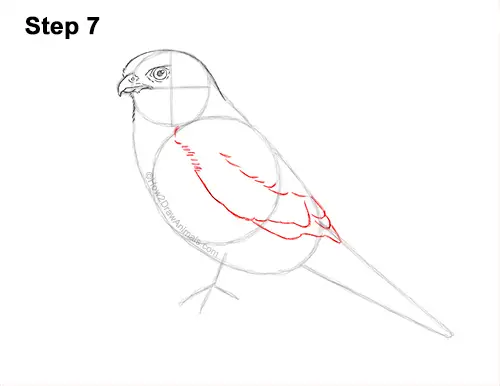
Step 7: Draw a long, curved line across the entire body for the top part of the bird of prey's folded wing. Use a series of short strokes at the top for a feathery texture. Draw the bottom edge of the wing using a series of curved lines for individual feathers. The tip of the wing should extend inside the shape of the tail.
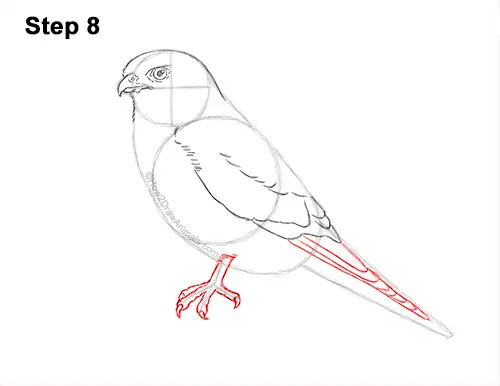
Step 8: Draw the long tip of the wing inside the shape of the tail. This shape should be triangular and similar to the tail. Inside the shape, draw a series of sloping lines that curve at the bottom for individual feathers. Draw the shape of the kestrel's foot around the guide lines that are under the body. Keep the edges of the foot and toes close to the guides so that the shape is thin. At the end of each toe, draw a thin, pointy shape for the talons. Add the visible section of another toe at the top so that there are three toes pointing forward and one pointing backward.
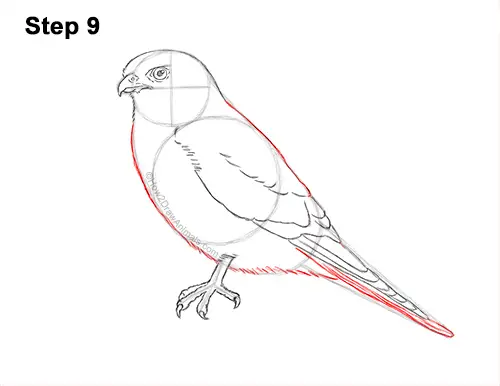
Step 9: Use the remaining shapes and lines as guides to draw the rest of the kestrel's body. Simply darken the outer edges of the guides to create the shape of the body. Use a series of short strokes on the underside of the body for a feathery texture.
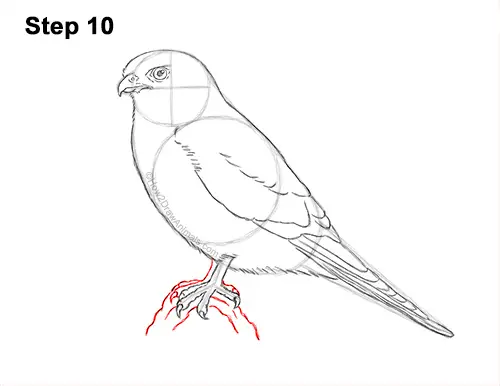
Step 10: Draw the visible part of the kestrel's other foot to the left of the first one. Use the first foot as a template as you draw this foot. Only parts of this foot will be visible. Under the feet, draw a few wavy lines to create the shape of the rock so that the bird has something to perch on.
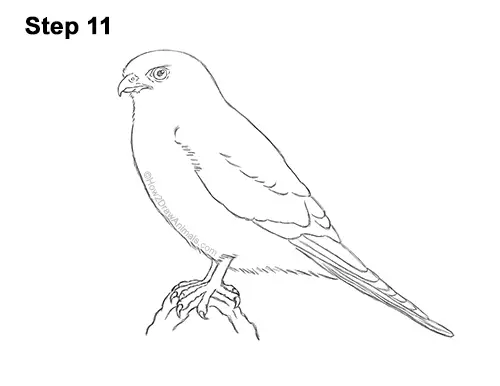
Step 11: For a cleaner look, erase as much as you can of the initial guide lines. Don't worry about erasing all of the guides. It's okay to leave some behind. Re-draw any final sketch lines you may have accidentally erased.
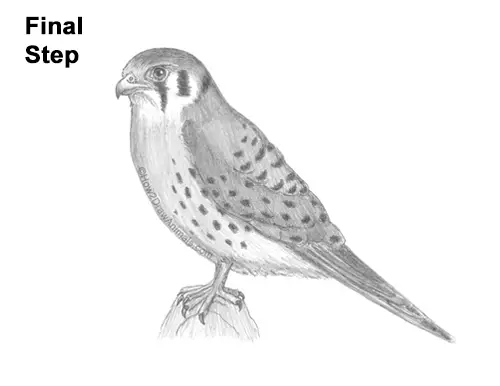
Final Step: Shade your kestrel drawing for extra detail. Shade lightly at first and gradually build up to darker values. For light values, push down very lightly on your pencil and push down harder for darker values. Use a medium value on the top part of the body and a light value for the bottom. Using a dark value, draw a stripe-like pattern on the lower half of the head. Add a few small sections of dark value on the wing and body for the spot-like pattern. As you shade, use strokes that go in the general direction of the feathers. Shade slowly and evenly for a smooth texture. Add a medium value on the underside of the body to create some shadows. Shadows will give the figure more dimension and volume. Shading can be time-consuming, so be patient and take breaks. It's a good idea to use reference as you shade for a more accurate depiction of an American kestrel. For a more detailed guide on how to shade, check out this tutorial: How to shade.
Thanks for visiting! Subscribe to the How2DrawAnimals YouTube Channel for a new tutorial every week.
To learn how to draw popular cartoon characters, visit EasyDrawingTutorials.com.
To learn how to draw Manga, visit How2DrawManga.com.
RELATED TUTORIALS
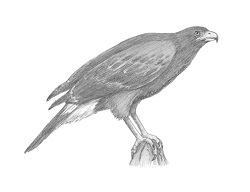 |
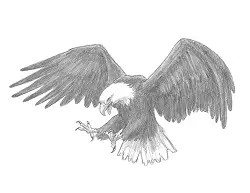 |
 |






